
The Ten Years' War, also known as the Great War and the War of '68, was part of Cuba's fight for independence from Spain. The uprising was led by Cuban-born planters and other wealthy natives. On 10 October 1868, sugar mill owner Carlos Manuel de Céspedes and his followers proclaimed independence, beginning the conflict. This was the first of three liberation wars that Cuba fought against Spain, the other two being the Little War (1879–1880) and the Cuban War of Independence (1895–1898). The final three months of the last conflict escalated with United States involvement, leading to the Spanish–American War.

Lt. General José Antonio de la Caridad Maceo y Grajales was a Cuban general and second-in-command of the Cuban Army of Independence.
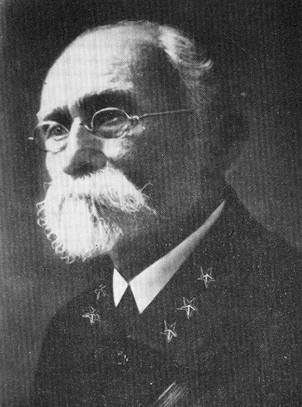
Máximo Gómez y Báez was a Dominican Generalissimo in Cuba's War of Independence (1895–1898). He was known for his controversial scorched-earth policy, which entailed dynamiting passenger trains and torching the Spanish loyalists' property and sugar plantations—including many owned by Americans. He greatly increased the efficacy of the attacks by torturing and killing not only Spanish soldiers, but also Spanish sympathizers and especially Cubans loyal to Spain. By the time the Spanish–American War broke out in April 1898, the rebellion was virtually defeated in most of Western Cuba, with only a few operating pockets in the center and the east. He refused to join forces with the Spanish in fighting off the United States, and he retired to the Quinta de los Molinos, a luxury villa outside of Havana after the war's end formerly used by captains generals as summer residence.

Cruces is a municipality and town in Cienfuegos Province, Cuba. It is the home of the Mal Tiempo National Park which commemorates a battle in the 1895 War of Independence.

The mambises were the guerrilla independence soldiers who fought for Cuba's independence from Spain in the Ten Years' War and Cuban War of Independence.
The First Eastern Campaign was a military campaign that took place between early May and late August of 1895 in Oriente Province of Cuba, in the Cuban War of Independence.
The Battle of El Jobito was a military event which took place on May 13 of 1895 in Oriente Province of Cuba, in the Cuban War of Independence.
The Invasion from East to West took place on the island of Cuba, and began on October 22, 1895, in Mangos de Baraguá, in the former province of Oriente. It was organized and directed by Antonio Maceo Grajales and Máximo Gómez. The Liberation Army, guided by the firmness of taking the fight against Spanish colonialism to all corners of Cuba, starred in one of the most relevant events in Cuban history. In the midst of the "Cuban War of Independence", inspired by José Martí, that campaign responded to the old desire of the insurgent generals Maceo and Gómez. These launched the strategy of limiting the liberation struggle to the eastern territory of the Island, but rather extending it throughout the entire Cuban territory to force Spain to fight simultaneously in the six provinces that the country had at that time, in order to weaken it on all fronts.

Juan Bruno Zayas Alfonso was a Cuban military leader and doctor of the Cuban War of Independence.
The Battle of Iguará was a battle of the Cuban War of Independence which took place on December 13, 1895 in the Santa Clara Province, Cuba.
The Battle of Coliseo was a group of military actions carried out in the surroundings of the town of the same name, Matanzas Province, Cuba on December 23, 1895 during the Cuban War of Independence.
The Battle of Calimete was a battle of the Cuban War of Independence on December 29, 1895, which was led by Cuban independence activists Máximo Gómez, Antonio Maceo and later on, Serafín Sánchez.
The Battle of Las Taironas was a battle of the Cuban War of Independence that took place on January 17, 1896 at Pinar del Río between Cuban forces led by Major General Antonio Maceo and the Spanish led by lieutenant colonel Ulpiano Sanchez Echevarria who was a Cuban native.
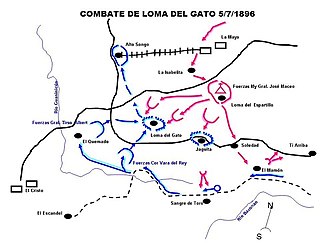
The Battle of Loma del Gato was a battle of the Cuban War of Independence that occurred on July 5, 1896 at Santiago de Cuba, Oriente Province. It is notable for the death of Mambí General José Maceo.
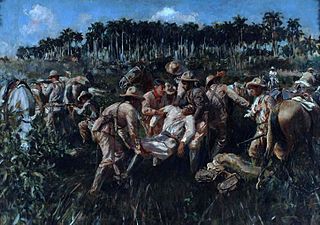
The Battle of San Pedro was a battle of the Cuban War of Independence that took place on December 7, 1896 within the vicinity of the farm of the same name. The battle occurred near the town of Punta Brava on the outskirts of Marianao, La Habana Province.
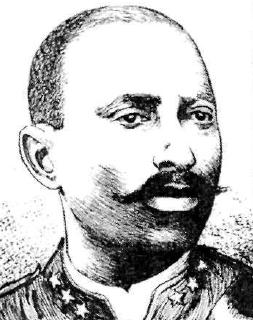
Pedro Antonio Díaz Molina was a Cuban general who was the only former slave that was a major general in the Cuban Liberation Army.

José Miró Argenter, also known as José de Miró Argenter was a Cuban brigadier general and author of Catalonian origin who served during the Cuban War of Independence. He was a division General of the Cuaban Liberation Army and a member of Antonio Maceo's General Staff. In 1899 he published his work Cuba: Chronicles of the War, which was a book on his participation in the Cuban War of Independence.
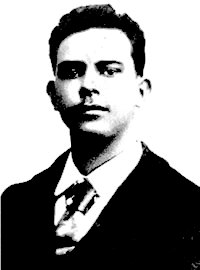
Francisco "Panchito" Gómez Toro was a Cuban lieutenant and war hero in the Cuban War of Independence. He was known for being the son of Máximo Gómez and for his death at the Battle of San Pedro at the young age of 20.
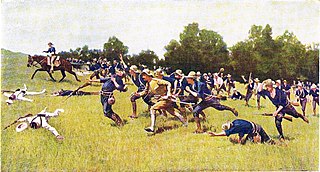
The Second Eastern Campaign was a military campaign that took place between August 1 to 12, 1898, in the Oriente Province of Cuba during the Cuban War of Independence. It was the shortest military campaign of the entire war and it was the one that marked the end of Spanish reign in Cuba and the Spanish Empire in Latin America.

The Cuban Liberation Army, colloquially known as the Mambí Army was an insurgent army which was formed in the last third of the 19th century and fought for independence from Spain and the abolition of slavery. It first saw combat in the Ten Years' War (1868-1878) under the command of Carlos Manuel de Céspedes, Ignacio Agramonte, and Carlos Roloff. The independentists were decentralized and operated within their own regions autonomously of each other, until the Assembly of Guáimaro established the Republic-in-Arms of Cuba and the Liberation Army's command structure. After the Pact of Zanjón, a brief uprising called the Little War saw Major-Generals Calixto García and Antonio Maceo lead the Army of Liberation in another attempt at independence and the abolition of slavery, though unsuccessfully. Finally, during the War of Independence, the Liberation Army was once again organized to fight against the Spanish colonial government. The Liberation Army would reach its highest count of active members in the Spanish-American War, when an imminent Cuban-American victory caused hitherto anti-independence elites to join the Liberation Army. These recruits were nicknamed "Sunflowers" because they "point to where the sun is shining".













